-
 Bitcoin
Bitcoin $91,256.3033
3.39% -
 Ethereum
Ethereum $1,723.5244
5.98% -
 Tether USDt
Tether USDt $1.0006
0.10% -
 XRP
XRP $2.1808
2.69% -
 BNB
BNB $611.6352
1.26% -
 Solana
Solana $145.2440
4.71% -
 USDC
USDC $1.0001
0.07% -
 Dogecoin
Dogecoin $0.1726
6.92% -
 TRON
TRON $0.2472
1.71% -
 Cardano
Cardano $0.6638
3.44% -
 Chainlink
Chainlink $14.0337
4.16% -
 Avalanche
Avalanche $21.8740
6.44% -
 UNUS SED LEO
UNUS SED LEO $8.9676
-1.35% -
 Stellar
Stellar $0.2598
-0.15% -
 Sui
Sui $2.4368
8.47% -
 Shiba Inu
Shiba Inu $0.0...01309
4.18% -
 Hedera
Hedera $0.1782
3.94% -
 Toncoin
Toncoin $2.9908
-0.39% -
 Bitcoin Cash
Bitcoin Cash $361.0314
4.64% -
 Hyperliquid
Hyperliquid $18.8127
3.63% -
 Litecoin
Litecoin $82.7354
3.19% -
 Polkadot
Polkadot $3.9250
0.37% -
 Dai
Dai $1.0001
0.03% -
 Bitget Token
Bitget Token $4.5168
0.88% -
 Ethena USDe
Ethena USDe $0.9994
0.01% -
 Pi
Pi $0.6419
0.67% -
 Monero
Monero $219.7573
2.35% -
 Pepe
Pepe $0.0...08517
7.03% -
 Uniswap
Uniswap $5.6768
4.46% -
 Aptos
Aptos $5.1717
0.94%
What is atomic swap for blockchain?
Atomic swaps enable secure, peer-to-peer crypto exchanges using HTLCs, offering decentralization and cost-effectiveness but facing challenges like complexity and limited scalability.
Apr 12, 2025 at 07:28 am

Atomic swap is a technology that enables the direct peer-to-peer exchange of different cryptocurrencies without the need for intermediaries like centralized exchanges. This process leverages smart contracts and decentralized protocols to ensure that the exchange is executed securely and trustlessly. The term "atomic" refers to the indivisibility of the transaction, meaning that the swap either completes entirely or not at all, providing a high level of security for the participants.
How Atomic Swaps Work
The mechanism behind atomic swaps involves the use of hash time-locked contracts (HTLCs). These are smart contracts that require the recipient of a payment to acknowledge receiving the payment before a deadline by generating a cryptographic hash of the transaction. If the recipient fails to acknowledge the payment within the specified time frame, the transaction is voided, and the funds are returned to the sender.
To initiate an atomic swap, two parties agree on the terms of the exchange, including the amount of each cryptocurrency to be swapped. The process typically involves the following steps:
- Party A generates a cryptographic hash and a secret key, then creates an HTLC on their blockchain, locking their cryptocurrency with the hash.
- Party B sees the HTLC on Party A's blockchain and creates a corresponding HTLC on their own blockchain, locking their cryptocurrency with the same hash.
- Party A reveals the secret key to claim the cryptocurrency from Party B's HTLC.
- Party B uses the revealed secret key to claim the cryptocurrency from Party A's HTLC.
If either party fails to complete their part of the transaction within the specified time, the locked funds are returned to their respective owners, ensuring that neither party loses their assets.
Benefits of Atomic Swaps
Atomic swaps offer several advantages over traditional methods of exchanging cryptocurrencies. Security is a primary benefit, as the use of HTLCs ensures that the swap is executed only if both parties fulfill their obligations. This reduces the risk of fraud and ensures that neither party can be left at a disadvantage.
Decentralization is another significant advantage. By eliminating the need for centralized exchanges, atomic swaps align with the core principles of blockchain technology, promoting a more decentralized financial ecosystem. This also reduces the risk of exchange hacks and other security breaches that are common in centralized platforms.
Cost-effectiveness is also a notable benefit. Without the need for intermediaries, atomic swaps can be executed at a lower cost compared to trading on centralized exchanges, which often charge fees for their services.
Limitations and Challenges
Despite their advantages, atomic swaps face several challenges that limit their widespread adoption. Complexity is a significant barrier, as the process requires a good understanding of blockchain technology and smart contracts. This can be daunting for less technically inclined users.
Scalability is another challenge. Atomic swaps currently support a limited number of cryptocurrencies, and the process can be slow compared to trading on centralized exchanges. This limits their practical use for frequent traders who need quick and efficient transactions.
Liquidity is also a concern. Without the large pools of liquidity found on centralized exchanges, finding a counterparty for an atomic swap can be difficult, especially for less popular cryptocurrencies.
Atomic Swaps vs. Centralized Exchanges
When comparing atomic swaps to centralized exchanges, it's essential to consider the trade-offs between the two. Centralized exchanges offer high liquidity, ease of use, and a wide variety of trading pairs. They are suitable for users who prioritize speed and convenience but come with the risks associated with centralized platforms, such as hacks and regulatory scrutiny.
In contrast, atomic swaps provide a more secure and decentralized method of exchanging cryptocurrencies. They are ideal for users who value privacy and security over convenience but may not be suitable for those who need to trade frequently or with a wide range of cryptocurrencies.
Implementing Atomic Swaps
For users interested in implementing atomic swaps, the process can be broken down into several key steps:
- Choose compatible cryptocurrencies: Ensure that the cryptocurrencies you want to swap are supported by atomic swap protocols. Popular pairs include Bitcoin and Litecoin.
- Select a platform or tool: There are several platforms and tools available that facilitate atomic swaps, such as Komodo’s AtomicDEX or the decentralized exchange Bisq. Choose one that suits your needs.
- Set up your wallets: Ensure that you have compatible wallets for the cryptocurrencies you wish to swap. These wallets must support the creation and management of HTLCs.
- Initiate the swap: Follow the platform or tool's instructions to initiate the swap. This typically involves locking your cryptocurrency in an HTLC and waiting for the counterparty to do the same.
- Monitor the transaction: Keep an eye on the transaction to ensure that it completes successfully. If the counterparty fails to fulfill their part of the swap, your funds will be returned to you.
Frequently Asked Questions
Q: Can atomic swaps be used for any cryptocurrency?
A: Not all cryptocurrencies support atomic swaps. The technology is most commonly used with cryptocurrencies that support smart contracts, such as Bitcoin and Litecoin. However, ongoing development efforts aim to expand the range of supported cryptocurrencies.
Q: Are atomic swaps legal?
A: The legality of atomic swaps varies by jurisdiction. In some countries, they are considered a form of decentralized trading and are subject to less regulatory scrutiny than centralized exchanges. However, it's essential to check the specific regulations in your area before engaging in atomic swaps.
Q: How long does an atomic swap take to complete?
A: The duration of an atomic swap can vary depending on the block times of the blockchains involved. For example, a swap between Bitcoin and Litecoin might take around an hour, while swaps involving Ethereum could be faster due to shorter block times.
Q: Can atomic swaps be reversed?
A: Atomic swaps are designed to be irreversible once completed. However, if the swap fails due to one party not fulfilling their obligations within the specified time frame, the locked funds will be returned to their respective owners.
Disclaimer:info@kdj.com
The information provided is not trading advice. kdj.com does not assume any responsibility for any investments made based on the information provided in this article. Cryptocurrencies are highly volatile and it is highly recommended that you invest with caution after thorough research!
If you believe that the content used on this website infringes your copyright, please contact us immediately (info@kdj.com) and we will delete it promptly.
- Launch of The Echo exchange and its native token, ECHO
- 2025-04-22 23:00:11
- 1933 penny coin could be worth a life-changing sum of money
- 2025-04-22 23:00:11
- ArchVM Launches a Test Version of Its Bitcoin Virtual Machine, Raising $10M in Funding
- 2025-04-22 22:55:13
- Both gold and Bitcoin (BTC) have extended their gains since yesterday
- 2025-04-22 22:55:13
- Mantra (OM) token crash requires a detailed forensic study, not just basic blockchain analysis
- 2025-04-22 22:50:11
- US Bitcoin (BTC) Exchange-Traded Funds (ETFs) Experience Their Largest Single-Day Net Inflow
- 2025-04-22 22:50:11
Related knowledge
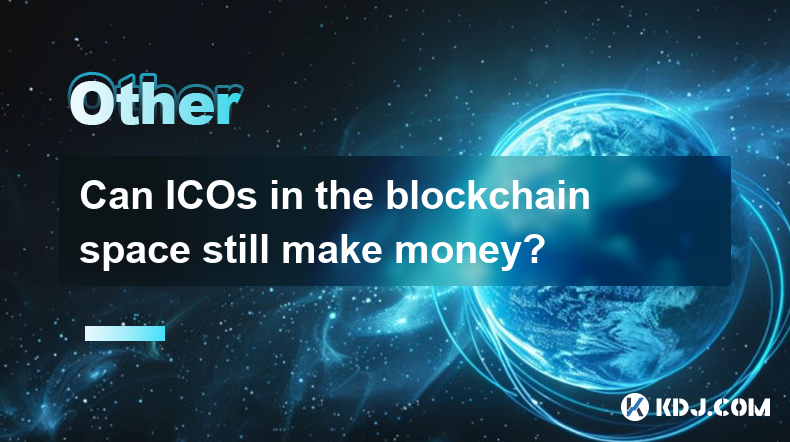
Can ICOs in the blockchain space still make money?
Apr 17,2025 at 08:29pm
The landscape of Initial Coin Offerings (ICOs) in the blockchain space has evolved significantly since their peak in 2017 and 2018. Despite the increased regulatory scrutiny and the rise of alternative fundraising methods like Security Token Offerings (STOs) and Initial Exchange Offerings (IEOs), ICOs can still be a viable way to raise funds and generat...

Can the application of blockchain in supply chain finance bring benefits?
Apr 15,2025 at 04:00pm
Can the application of blockchain in supply chain finance bring benefits? The integration of blockchain technology into supply chain finance has garnered significant attention in the cryptocurrency and financial sectors. This article explores how blockchain can potentially revolutionize supply chain finance, detailing its benefits and providing a compre...
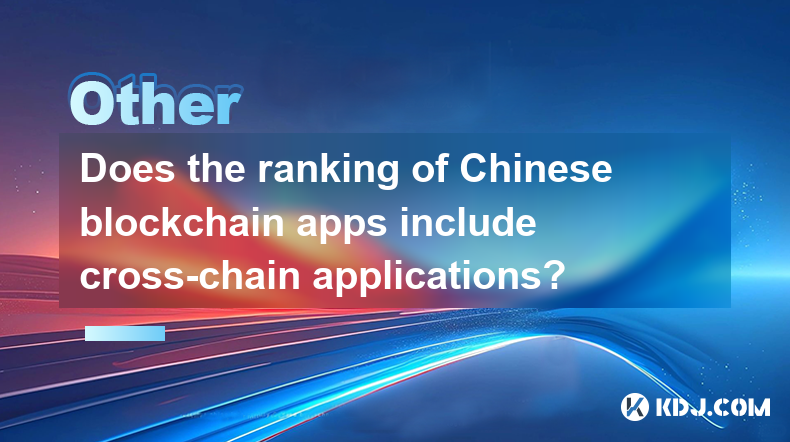
Does the ranking of Chinese blockchain apps include cross-chain applications?
Apr 14,2025 at 04:00pm
The ranking of Chinese blockchain apps is a comprehensive evaluation that takes into account various aspects such as user base, transaction volume, and technological innovation. A pertinent question arises regarding whether these rankings include cross-chain applications. Cross-chain applications, which allow different blockchain networks to interact an...
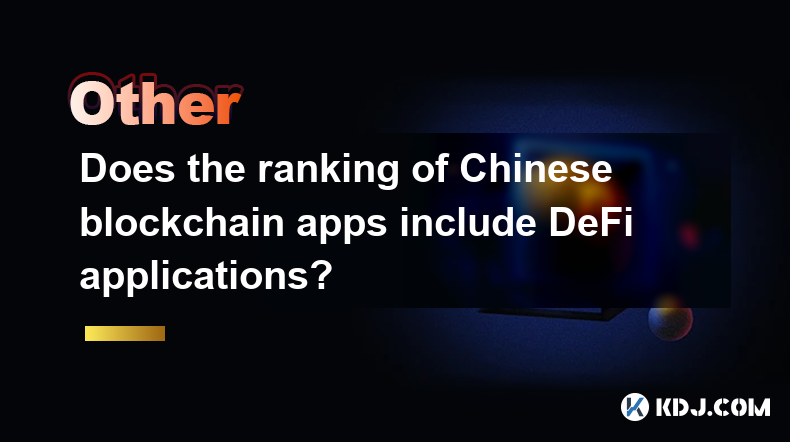
Does the ranking of Chinese blockchain apps include DeFi applications?
Apr 15,2025 at 06:57am
The ranking of Chinese blockchain apps is a comprehensive list that showcases the most popular and influential applications within the cryptocurrency ecosystem. One question that often arises is whether these rankings include DeFi applications. To answer this, we need to delve into the specifics of how these rankings are compiled and what types of appli...
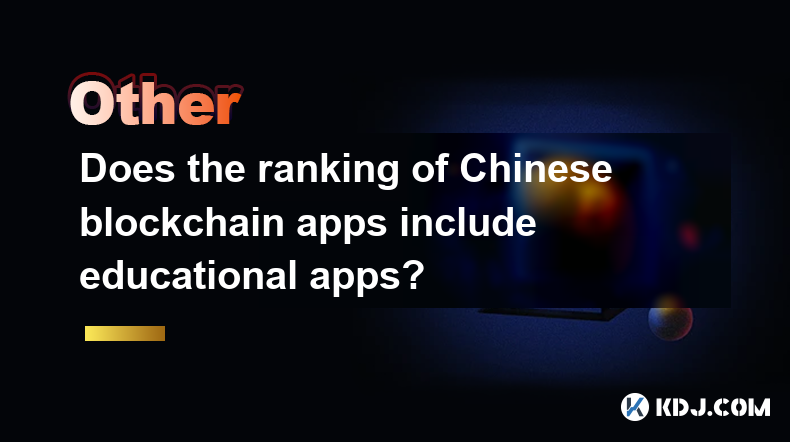
Does the ranking of Chinese blockchain apps include educational apps?
Apr 16,2025 at 03:35am
The ranking of Chinese blockchain apps often includes a variety of categories, from finance and gaming to social networking and beyond. One question that frequently arises is whether these rankings include educational apps. To address this, we need to delve into the specifics of how blockchain apps are categorized and ranked in China, and whether educat...
Does the ranking of Chinese blockchain apps include enterprise-level applications?
Apr 15,2025 at 06:42am
The ranking of Chinese blockchain apps often includes a variety of applications, ranging from consumer-focused to enterprise-level solutions. Understanding the scope and criteria for these rankings is essential to determine if enterprise-level applications are included. This article delves into the specifics of how Chinese blockchain app rankings are co...

Can ICOs in the blockchain space still make money?
Apr 17,2025 at 08:29pm
The landscape of Initial Coin Offerings (ICOs) in the blockchain space has evolved significantly since their peak in 2017 and 2018. Despite the increased regulatory scrutiny and the rise of alternative fundraising methods like Security Token Offerings (STOs) and Initial Exchange Offerings (IEOs), ICOs can still be a viable way to raise funds and generat...

Can the application of blockchain in supply chain finance bring benefits?
Apr 15,2025 at 04:00pm
Can the application of blockchain in supply chain finance bring benefits? The integration of blockchain technology into supply chain finance has garnered significant attention in the cryptocurrency and financial sectors. This article explores how blockchain can potentially revolutionize supply chain finance, detailing its benefits and providing a compre...

Does the ranking of Chinese blockchain apps include cross-chain applications?
Apr 14,2025 at 04:00pm
The ranking of Chinese blockchain apps is a comprehensive evaluation that takes into account various aspects such as user base, transaction volume, and technological innovation. A pertinent question arises regarding whether these rankings include cross-chain applications. Cross-chain applications, which allow different blockchain networks to interact an...

Does the ranking of Chinese blockchain apps include DeFi applications?
Apr 15,2025 at 06:57am
The ranking of Chinese blockchain apps is a comprehensive list that showcases the most popular and influential applications within the cryptocurrency ecosystem. One question that often arises is whether these rankings include DeFi applications. To answer this, we need to delve into the specifics of how these rankings are compiled and what types of appli...

Does the ranking of Chinese blockchain apps include educational apps?
Apr 16,2025 at 03:35am
The ranking of Chinese blockchain apps often includes a variety of categories, from finance and gaming to social networking and beyond. One question that frequently arises is whether these rankings include educational apps. To address this, we need to delve into the specifics of how blockchain apps are categorized and ranked in China, and whether educat...

Does the ranking of Chinese blockchain apps include enterprise-level applications?
Apr 15,2025 at 06:42am
The ranking of Chinese blockchain apps often includes a variety of applications, ranging from consumer-focused to enterprise-level solutions. Understanding the scope and criteria for these rankings is essential to determine if enterprise-level applications are included. This article delves into the specifics of how Chinese blockchain app rankings are co...
See all articles























































































